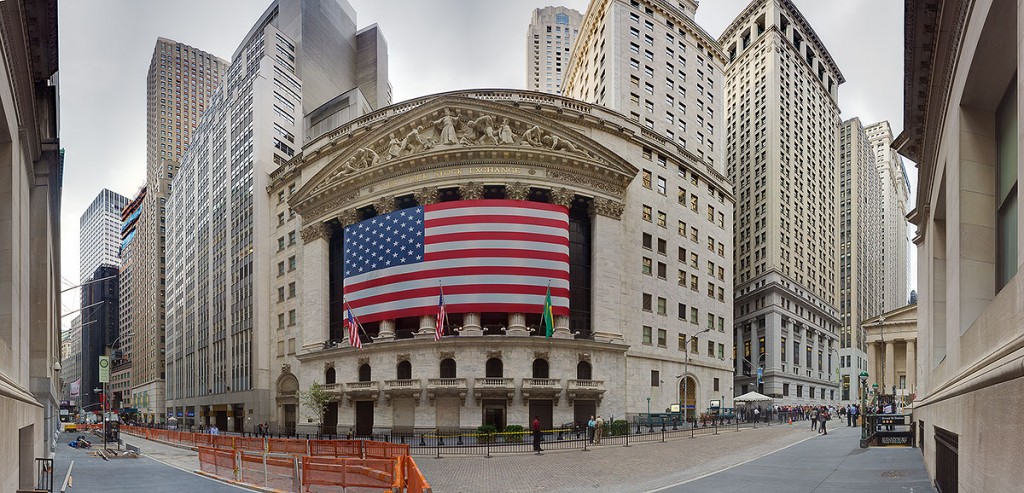US equity markets are experiencing capital inflows from around the world for three fundamental reasons: 1) A strengthening currency 2) Growth on the margin; and 3) Capacity. These three characteristics make US equities as extraordinary as an honest politician, and are the basis of an extremely compelling case for US Growth and Consumption stocks as one of the most attractive places to allocate money globally.
Since hitting a 40 year low in August 2011 the US Dollar has been gaining strength due to relatively dovish monetary policy in Europe and Japan, and more recently, the expectation of QE tapering. In absolute terms $85B means nothing, the data must be contextualized amongst its peers so that it is relative, and thus relevant; the Dollar has strengthened against 14 out of the world's 16 major currencies this year according to Bloomberg data. In addition, it is expectations and what's happening on the margin that move markets. Numbers don’t lie let’s check the scoreboard year-to-date: US Dollar Index +0.78%, Euro +0.95%, Yen -11.5%, 10yr yield +63%, Gold -18.5%.
The US economy continues to improve on the margin as a strengthening Dollar deflates commodities and fuels consumption. The deflation of commodities is not a result of growth slowing, but is the catalyst for growth accelerating; Keith McCullough was first to this point. A strengthening currency has empowered the consumer and is perpetuating growth in an economy that is greater than 70% consumption based, and the score reflects exactly that: US GDP for Q2 2013 was 1.7% versus 0.38% in Q4 2012 when growth started to stabilize. With respect to the most recent Q2 print, Investments grew +9.0% QoQ, accelerating 4.3% sequentially (Hedgeye). What’s meaningful is that it is the right segments of GDP, the “C” (Consumption +1.8% QoQ) and the “I” (Investments) that have been increasing sequentially. A decrease in “G” (Government Spending) may drawdown the headline number, but is Dollar bullish: the basis of the Consumption Growth thesis.
The US Employment picture continues to improve on the margin, last week’s Initial Claims print was the best of the year. The same can be said for housing sales, starts and prices. Furthermore, rising rates for the correct reasons, and Gold crashing are pro-growth signals that have been flashing red since the fall of last year. The 30 year bull market in long term US treasuries has ended and if Bernanke doesn't taper the market will force his hand; every promoter runs out of bullets at some point. Yields on the UST 10yr are up to 2.80%, doubling after bottoming at 1.40% last July. The 40 year average yield on the UST 10yr is north of 6.5%; the party's just about to get wild and Bernanke is headed for the exit.
As Ray Dalio of Bridgewater Associates points out, the most dangerous bubble is upon us, and that is the global Cash Bubble. According to BlackRock of the $155.6B investors shifted into developed-market equities this year, North American funds received $102.4B (65.8%). Slumping currencies and inflation risks in Emerging Markets are adding pressure on their Central Banks to increase interest rates and capital is shifting away (Year-to-date: Brazil -17.3% , Russia –13.46%, India -24%, China -8.95%).
Will capital continue to flow to and from the same places? The answer is “yes” if the US Dollar continues to gain relative strength. This year is not the 2008-12 reflation trade (US Dollar down, stocks up). 2013 is the growth trade, and there are very few places in the world experiencing an acceleration in growth as well as have the capacity to facilitate such an epic shift of capital. Cash exiting long-term bonds and Emerging Markets will need a home, and Ms. Market has been telling you since last fall where that home is, all you have to do is listen to her. According to Daryl Jones of Hedgeye the US bond market has “$38 trillion of bonds outstanding across all subsectors of the bond market. Moreover, bonds outstanding have increased every single year since 1990.” That’s a lot of dough.
The number one risk to growth and the market is Government. Obama has resided over the weakest dollar of any US President…ever. If Obama is able to spend like a princess with her daddy’s credit card, raises taxes, or the Fed fails to taper and maintains elevated Oil prices (average 40 year inflation adjusted price of Oil is $52.91), then the US Consumption Growth thesis is most certainly out the window. So, yes, tapering would be good for both the US economy and inherently, US equity markets, because it’s causal impact is US Dollar bullish.
The question to ask now is: What does a strengthening US Dollar and a downward move in the price of Oil do for consumption growth?
“A man should look for what is, and not for what he thinks should be.” - Einstein
Alim Abdulla is an Investment Advisor at Leede Financial and is a co-founder of the Trading Analytics Group (TAG). He has been with Leede for nine years and began his career in the Financial Industry a year prior at Canaccord Capital. Alim considers himself to be an Active Risk Manager focused on long/short equity portfolios.
Disclaimer: The comments and opinions expressed herein reflect the personal views of Alim Abdulla. They may differ from the opinions of Leede Financial Markets Inc. and should not be considered representative of the research beliefs, opinions or recommendations of Leede Financial Markets Inc. The information included in this document, including any opinion, is based on various sources believed to be reliable, but its accuracy and completeness is not guaranteed. Member CIPF.
























Alim, Good points. Couple of questions: Shouldn’t a strengthening US dollar make US equities more expensive and thus less attractive to value investor? In regards to gold, international political instability aside is it fair to say that gold won’t really rebound to its highs until US inflation kicks in about 2-3 years as QE ends and consumer spending increases?
Sorry for the delayed response John, was on a short holiday. You make a good point re: valuation, however, a strengthening US Dollar will perpetuate further consumption growth; market moves on expectations. And lets not forget about the excessive amount of liquidity that has yet to find any velocity. With respect to Gold, I would agree. The world is not ending and every mini crisis results in further capital inflows to the US. There is no bottom in Gold if the US Dollar continues to gain relative strength.